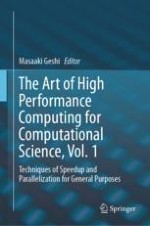2019 | OriginalPaper | Buchkapitel
10. Techniques Concerning Computation Accuracy
verfasst von : Shin’chi Oishi, Yusuke Morikura, Kouta Sekine, Hisayasu Kuroda, Maho Nakata
Erschienen in: The Art of High Performance Computing for Computational Science, Vol. 1
Verlag: Springer Singapore
Aktivieren Sie unsere intelligente Suche, um passende Fachinhalte oder Patente zu finden.
Wählen Sie Textabschnitte aus um mit Künstlicher Intelligenz passenden Patente zu finden. powered by
Markieren Sie Textabschnitte, um KI-gestützt weitere passende Inhalte zu finden. powered by
